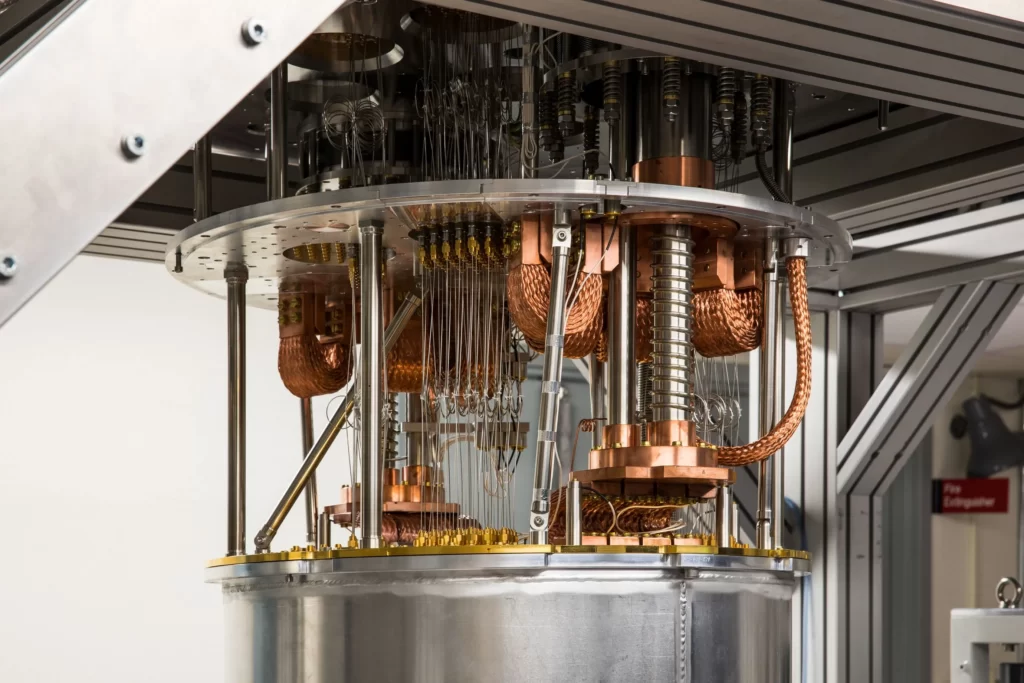Quantum Computing’s Odyssey: Progress Towards Practical Quantum Computers
Introduction:
In the pursuit of unlocking the immense potential of quantum computing, researchers and engineers are navigating a frontier where the principles of quantum mechanics converge with the practical challenges of building scalable and stable quantum computers. This article delves into the remarkable progress made in recent years, exploring the advancements, hurdles, and the promising future that awaits as we journey toward the realization of practical quantum computers.
Foundations of Quantum Computing:
Quantum computing’s foundations are laid upon the principles of superposition and entanglement, allowing quantum bits or qubits to exist in multiple states simultaneously. Harnessing these quantum properties holds the promise of solving complex problems exponentially faster than classical computers, from cryptography and optimization to simulating quantum systems.
Advancements in Quantum Hardware:
One of the key milestones in the progress towards practical quantum computers is the development of quantum hardware. Companies and research institutions worldwide are engaged in a race to build quantum processors with an increasing number of qubits while maintaining stability and coherence. IBM, Google, Rigetti Computing, and other major players have made significant strides, with some reaching the threshold of quantum supremacy.
Google’s Quantum Supremacy:
In 2019, Google claimed to have achieved a historic milestone known as quantum supremacy. Their quantum processor, named Sycamore, reportedly performed a specific task faster than the most advanced classical supercomputers could. This accomplishment marked a watershed moment, demonstrating that quantum computers could, in principle, outpace classical counterparts for certain computations.
IBM’s Quantum Roadmap:
IBM has been a stalwart in the quantum computing arena, making substantial contributions to both hardware and software. The IBM Quantum Roadmap outlines a strategic plan to build increasingly powerful quantum processors. The company’s Quantum Hummingbird processor, with 65 qubits, represents a significant leap forward, showcasing the commitment to advancing the field.
Challenges in Quantum Hardware:
However, building practical quantum computers is not without its challenges. Qubits are notoriously delicate and susceptible to environmental noise and interference. Maintaining coherence, the duration in which qubits retain their quantum state remains a significant hurdle. Quantum error correction and fault-tolerant quantum computing are active areas of research aimed at overcoming these challenges.

Quantum Volume as a Metric:
Quantum Volume has emerged as a metric to assess the overall performance of quantum computers, considering factors like qubit connectivity, gate error rates, and coherence times. As quantum processors become more complex, Quantum Volume provides a holistic measure of their capabilities, offering a clearer picture of progress beyond the raw count of qubits.
Beyond Qubits: Quantum Co-Processors and Quantum Cloud Computing:
Progress in quantum computing extends beyond increasing the number of qubits. Researchers are exploring the development of specialized quantum co-processors that work in conjunction with classical computers, leveraging the strengths of both systems. Quantum cloud computing platforms, such as IBM Quantum and Microsoft Azure Quantum, are enabling researchers and developers to access quantum resources remotely, fostering collaboration and accelerating progress.
Quantum Software and Algorithms:
Parallel to advancements in hardware, the development of quantum software and algorithms is a crucial facet of progress. Quantum algorithms, including Shor’s algorithm and Grover’s algorithm, showcase the potential of quantum computers to solve specific problems exponentially faster than classical algorithms. Quantum software development platforms, like Qiskit and Cirq, are empowering researchers to experiment with and optimize quantum algorithms.
Quantum Networking and Communication:
Building practical quantum computers also involves establishing the infrastructure for quantum networking and communication. Quantum key distribution (QKD), a quantum-safe method for secure communication, is gaining traction. The development of quantum repeaters and quantum memories is crucial for extending the reach of quantum communication over longer distances.
Global Collaborations and Research Initiatives:
The complexity of the quantum computing challenge has led to an era of global collaboration. Governments, academia, and private industry are joining forces in research initiatives to accelerate progress. Programs such as the European Quantum Communication Infrastructure (EuroQCI) and the U.S. National Quantum Initiative are indicative of the collaborative spirit driving the field forward.
The Promising Future:
As we reflect on the progress made in building practical quantum computers, the future appears increasingly promising. Quantum computers are transitioning from proof-of-concept experiments to tools with practical utility. The development of quantum computers with hundreds or even thousands of qubits, coupled with advancements in error correction and quantum algorithms, holds the potential to solve real-world problems with unprecedented speed and efficiency.
Conclusion:
The odyssey toward practical quantum computers is marked by remarkable achievements, persistent challenges, and a collective determination to push the boundaries of what is possible. The intersection of physics, engineering, and computer science in the quantum realm is forging a path toward a future where quantum computing becomes an integral part of our technological landscape. As researchers and engineers continue this transformative journey, the destination promises not only unprecedented computational power but a new era of innovation and discovery.